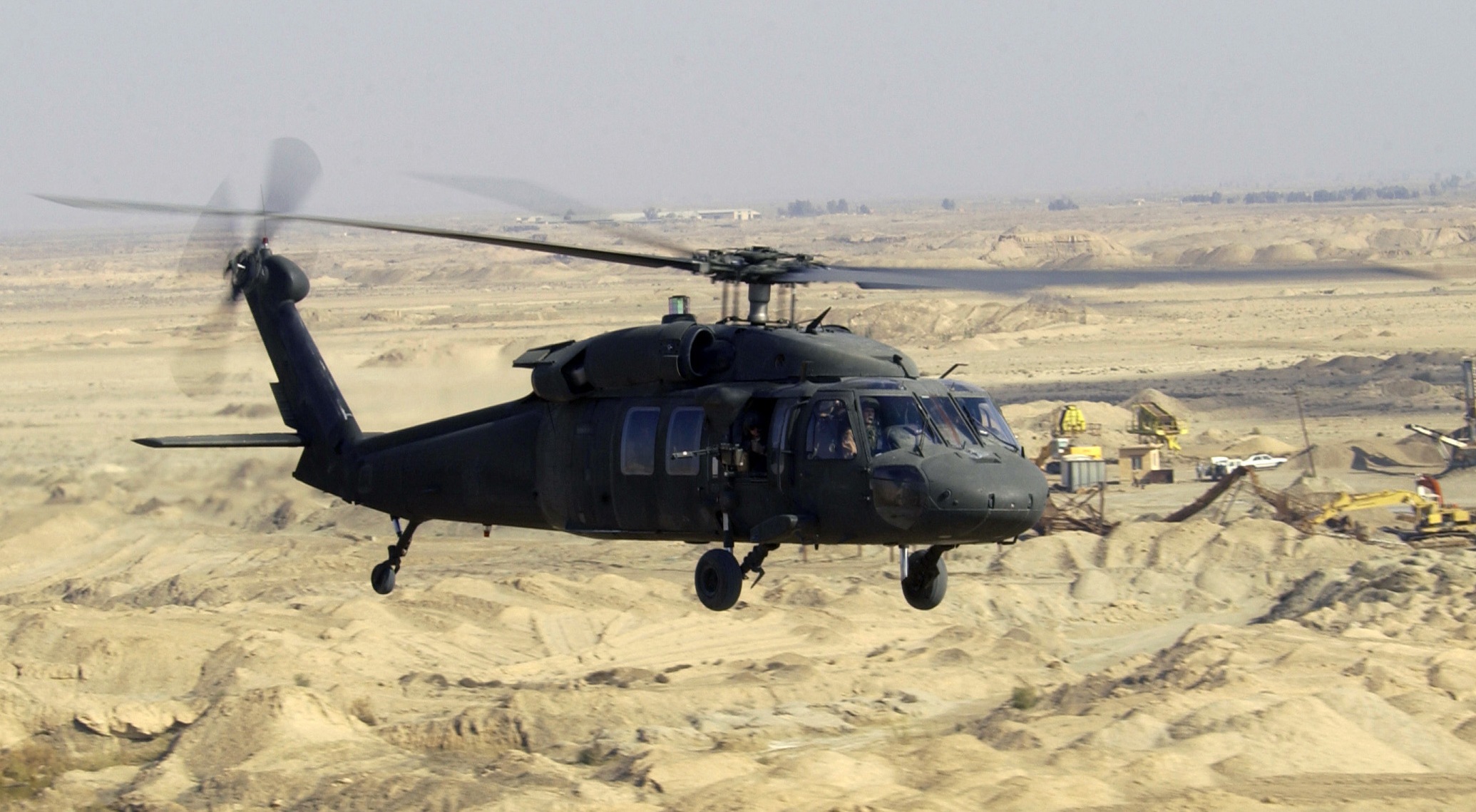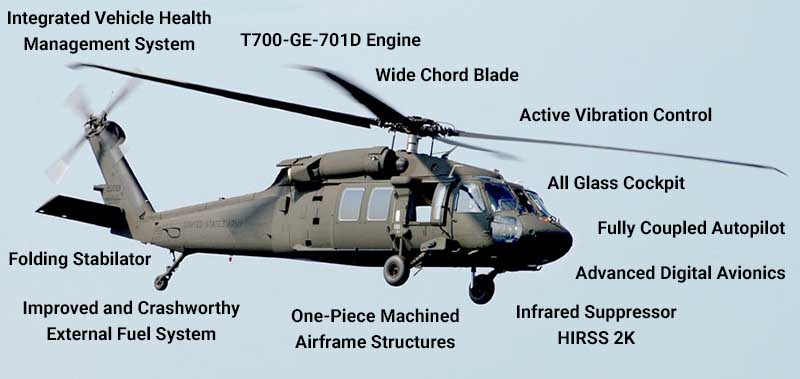The UH 60: An Explore Its Role in Modern-Day Armed Force Missions
The UH 60: An Explore Its Role in Modern-Day Armed Force Missions
Blog Article
Essential Facts and Insights About the UH-60 Helicopter
The UH-60 helicopter, a cornerstone of modern army aviation, has actually progressed significantly because its introduction in 1979. Renowned for its adaptability, it features an advanced style that fits numerous operational needs, from troop transport to medical evacuation. Its innovative avionics and robust building and construction enhance both efficiency and safety in diverse settings. Nonetheless, the effects of its design options and operational capacities extend past the battlefield, influencing humanitarian objectives worldwide. Understanding the ins and outs of the UH-60's role exposes an intricate story of technology and adjustment that benefits further exploration.
History of the UH-60
The UH-60 Black Hawk helicopter was established in the late 1970s as part of the USA Army's initiative to replace the older UH-1 Iroquois. The requirement for a much more functional, resilient, and qualified aircraft arose from the lessons discovered throughout the Vietnam War, where the limitations of the UH-1 emerged. In 1972, the Military launched a program to procure a brand-new utility helicopter, culminating in a competitive design stage that saw a number of producers submit propositions.
Sikorsky Aircraft was eventually awarded the contract in 1976, and the first prototype of the Black Hawk flew in 1974. Its design concentrated on advanced innovation, consisting of a four-blade blades system and a modular construction that enabled for fast area maintenance and adaptability to numerous goals. Formally going into service in 1979, the UH-60 rapidly became the foundation of Military aviation, offering in a wide variety of functions such as army transportation, medevac, and logistical support.
Over the years, the Black Hawk has gone through numerous upgrades and alterations, strengthening its status as an essential asset in armed forces operations around the world (UH 60). Its robust efficiency proceeds to fulfill the evolving demands of modern-day war
Layout and Features
Incorporating sophisticated design concepts, the UH-60 Black Hawk includes a smooth, aerodynamic layout that enhances its efficiency and efficiency. This twin-engine energy helicopter is identified by its distinctive shape, with a high-mounted, four-blade main rotor system that provides remarkable lift and stability. The rotor blades are built from composite materials, adding to their longevity and reducing upkeep demands.
The body is created for ideal weight circulation and structural stability, enabling a maximum gross weight of roughly 22,000 extra pounds. The cabin design facilitates versatile configurations, fitting numerous objectives, from army transportation to medevac procedures. Furthermore, the cabin is outfitted with advanced avionics, including digital display screens and multi-functional systems that boost situational awareness.
The UH-60 also integrates composite products in its airframe, which decrease radar cross-section and enhance survivability in aggressive settings. Its retractable touchdown gear enhances the aircraft's account, further adding to its wind resistant performance. In general, the thoughtful combination of style elements and materials not only improves the Black Hawk's operational capabilities but also makes certain that it continues to be an important possession for objectives throughout varied surfaces and problems.
Operational Capabilities


The UH-60 is geared up with advanced avionics and navigation systems, helping with procedures in tough weather condition conditions and low visibility circumstances. Its robust design enables it to do in high-altitude and extreme temperature level conditions, even more expanding its functional array. The helicopter's twin-engine arrangement gives redundancy and enhanced performance, making sure integrity throughout vital missions.
Outfitted with sophisticated interaction systems, the Black Hawk enhances situational recognition and coordination among military devices. Additionally, its capacity to carry out aerial reconnaissance and support close air support goals underscores its essential function on the battleground. On the whole, the UH-60 Black Hawk's operational capabilities are a testimony to its significance in modern-day armed forces air travel, efficiently satisfying the needs of a swiftly evolving operational landscape.

Alterations and versions
Various versions and modifications of the UH-60 Black Hawk have actually been developed to meet certain objective requirements and enhance its operational flexibility. One of the most noteworthy version is the UH-60L, which introduced updated engines, boosted avionics, and boosted freight capability. Additionally, the UH-60M variant features progressed electronic avionics, a more effective engine, and enhanced survivability systems, making it appropriate for a larger array of missions.
The HH-60G Lead Hawk is another specialized version, developed for search and rescue procedures. It is geared up with innovative navigating systems, exterior gas tanks, and medical emptying capabilities. Likewise, the MH-60R Seahawk is maximized for anti-submarine war and maritime operations, boasting innovative radar and sonar systems.
Additionally, the armed variants, such as the AH-60, are changed for straight strike duties, including weapon systems like rockets and gatling gun. The UH-60's flexibility is additional showcased in its capacity to be fitted with mission-specific devices, consisting of cargo hooks for transport, troop transportation interiors, and reconnaissance sensors.
These variations and alterations emphasize the Black Hawk's essential duty in modern armed forces procedures, showcasing its capacity to adapt to developing goal demands.
Role in Good Samaritan Initiatives
The UH-60 Black Hawk has actually tipped up to play a critical role in humanitarian efforts around the world, showing its flexibility beyond armed forces applications. This multi-mission helicopter is geared up to carry out a find out here now selection of missions, consisting of medical emptyings, calamity alleviation, and logistical assistance in difficult environments.
Throughout natural calamities, such as earthquakes and typhoons, the Black Hawk has verified vital for transporting relief supplies and workers to affected areas. Its ability to run in austere problems permits it to reach remote areas that may be unattainable by ground transportation, ensuring timely support to those in demand.
Additionally, the UH-60 is commonly used for clinical emptying missions, quickly transferring injured individuals to clinical centers. Its innovative clinical capabilities, consisting of room for clinical workers and tools, make it possible for life-saving treatments throughout important scenarios.
In global operations, the Black Hawk regularly collaborates with humanitarian companies, showcasing its adaptability and integrity. By leveraging its abilities, the UH-60 not only sustains army objectives but also plays a vital duty in easing and saving lives suffering during altruistic situations worldwide.
Verdict
The UH-60 helicopter has actually developed itself as a critical asset in military procedures since its introduction, characterized by its robust style and functional capacities. Its different configurations deal with a vast array of objectives, from troop transport to clinical emptying. The UH-60's contributions extend beyond combat, playing a substantial duty in humanitarian efforts worldwide. The continuous development of this airplane underscores its importance in modern air travel and its adaptability to fulfill varied functional needs.
The UH-60 Black Hawk helicopter was developed in the late 1970s as part of the United States Military's initiative to change the older UH-1 Iroquois.Including innovative engineering principles, the UH-60 Black Hawk Look At This features a sleek, aerodynamic design that improves its efficiency and efficiency.Maximized layout and progressed engineering enable the UH-60 Black Hawk to stand out in a selection of functional roles. Overall, the UH-60 Black Hawk's operational capacities are a testament click here for more to its importance in contemporary army aeronautics, properly meeting the demands of a swiftly progressing operational landscape.
Different variations and modifications of the UH-60 Black Hawk have been developed to satisfy specific objective requirements and improve its operational versatility.
Report this page